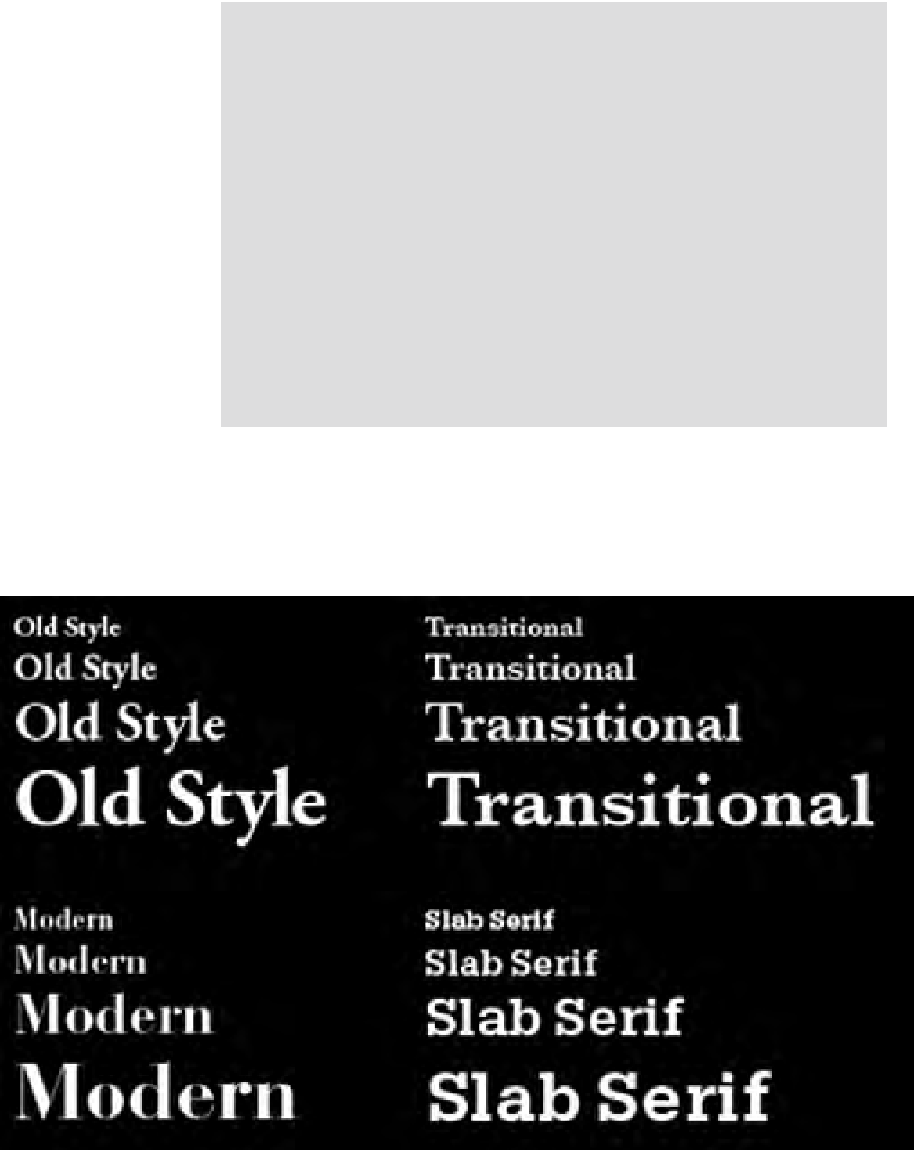Graphics Reference
In-Depth Information
SELECTING TYPEFACES
Given the limitations of rendering type on
screen, the choice of typeface will either
help or hinder legibility. The most readable
typefaces exhibit formal characteristics that
distinguish them as timeless specimens
capable of serving any communicative need.
The type families shown in Chapter 13, Type
Specimens, display these universal qualities.
When considering typefaces for use on the
web or for other on-screen applications,
the following guidelines will help in their
selection:
8-13
This design
proposal for online
ballots achieves its
purpose by utilizing clear
hierarchy created from
clear information zones.
(Designer: Ben Higgins)
On-screen type sizing
Type on screen can be measured in several
ways. Pixels, ems, rems, xx-small, and
relative percentages of parent elements
are all acceptable for specifying the size
of on-screen type. While these can be
used individually for text sizing, they are
generally used in combination to best allow
adaptive scaling. To accomplish this, a font
size and line height are declared in pixels for
the tag in HTML. All other type is sized and
spaced relative to these values via ems, rems
(a root em), or percentages.
Simplicity
Typefaces possessing elemental shapes
translate more effectively into the domain of
pixels than do typefaces with ornamental and
adorned shapes, or typefaces with extreme
stroke-to-stroke contrasts (Fig.
8-13
).
Intricate forms lose detail when translated.
Elaborate typefaces may gain in legibility when
presented at larger sizes, but this gain in visual
fidelity may not compensate for how they
can potentially detract from the content and
message. If used, they must be employed as
part of a strategic communicative plan. Many
typefaces have simple yet distinctive letterform
shapes that render well on screens of various
resolutions.
8-14
Compare these serif type examples for legibility
at various sizes. As type gets smaller on screen, it is
described by fewer pixels, which decreases legibility.
The specimens shown are antialiased at a resolution
of 72 dpi.



